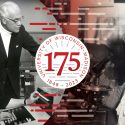Science stories that stood out on campus in 2023
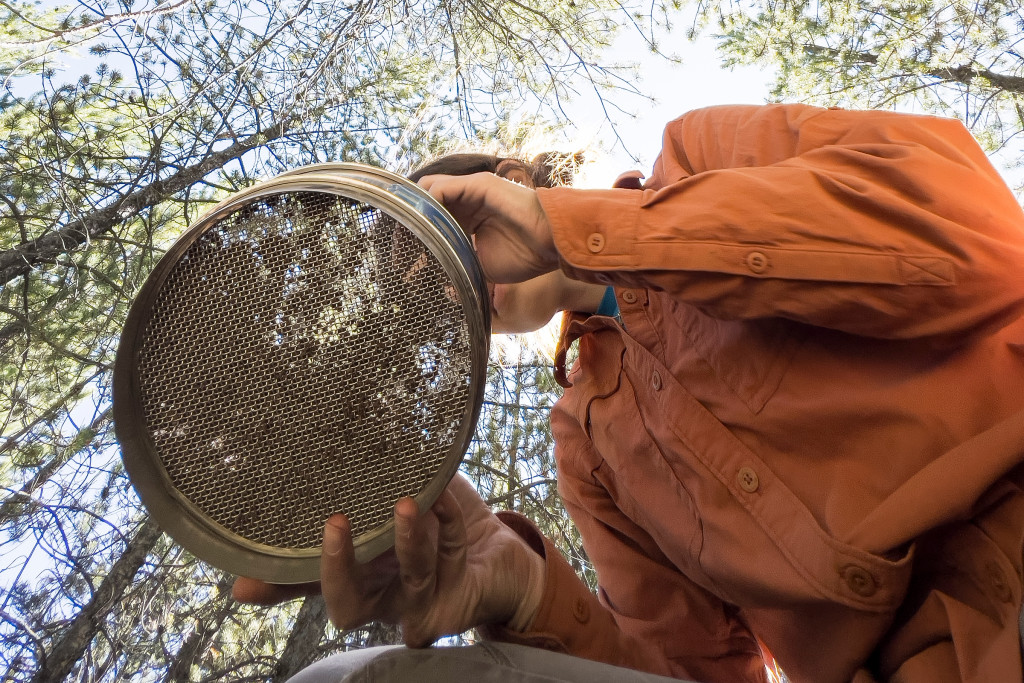
Graduate student Arielle Link sifts through soil in Grand Teton National Park on July 12, 2023. The photograph is part of a series of stories highlighting UW ecologist Monica Turner’s research on forest resilience and the ecological impact of fire in the Greater Yellowstone Ecosystem. Photo: Althea Dotzour
This year, the University of Wisconsin–Madison achieved something it never has before: The university exceeded $1.5 billion in research expenditures. This information, compiled annually by the National Science Foundation, is important, though it’s just one measure of research activity on campuses across United States.
Here at University Communications, we also measure our research activity in the joy we experience writing a story about efforts by UW–Madison scientists to confront deadly antibiotic resistance neighborhood-by-neighborhood in Wisconsin, reading stories about our researchers’ queries to uncover the mysteries of our universe and creating videos about the hands-on experiences our veterinary students get while caring for wildlife across the state.
What follows are some of the stories that stood out to us most this year. We hope you enjoy exploring them as much as we did.
— Chris Barncard, Elise Mahon, Will Cushman, Kelly Tyrrell
Tomorrow’s Yellowstone
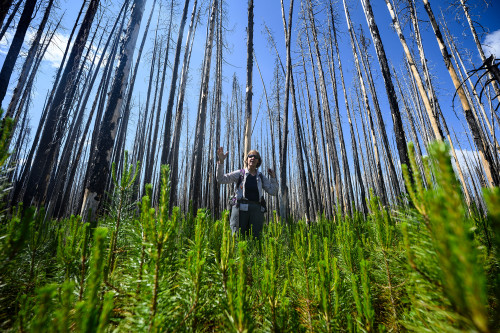
Tomorrow’s Yellowstone Photo: Althea Dotzour
When Monica Turner was 19 years old, she traveled from the east coast of the U.S. to Yellowstone National Park to serve as an interpretive ranger for the Student Conservation Association. She could not have known then, in 1978, that her experience would spark a nearly four-decade career in conservation biology, studying the forests of the park and the surrounding region. She’s helping the world grapple with wildfires that are, due to a changing climate, transforming the character of a place countless people love. This summer, Elise and two of our University Communications colleagues, Althea Dotzour and Jason Weiss, spent time with Turner and three of her graduate students, advancing our understanding of the region’s shifting landscapes. Watch the team’s videos, admire their gorgeous photos and learn what you can do for tomorrow’s Yellowstone.
Don’t miss the BOAT

Astronomers map Milky Way by light of exploding star
The universe is such a big place, it’s a wonder we ever happen to be standing in just the right place and time to watch something amazing happen — something like the BOAT, the brightest-of-all-time gamma ray burst that reached Earth on Oct. 9, 2022. The brightest of our time, that is. Which, to the universe, probably seems no longer than a flash of light. And still, the fleeting radiation from the BOAT skimmed across the disk of our galaxy on its way here, illuminating parts of the Milky Way we may never have seen otherwise.
Soul mates? Try mold mates.
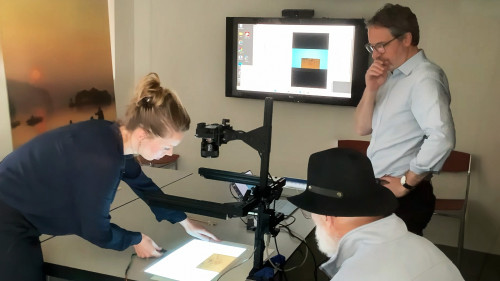
Cracking the da Vinci chronology: System tries to bring order to the works of a Renaissance genius Photo by William Sethares
When Leonardo da Vinci died in 1519, the Renaissance master left behind 7,000 pages of undated drawings, scientific observations and personal journals, more or less jumbled up in a box. He may have been a genius, but it turns out, da Vinci was also a bit of a hot mess. To help organize da Vinci’s works, William Sethares, an electrical and computer engineering professor, and graduate student Elisa Ou, are using a sophisticated camera and algorithm system called WImSy to match undated drawings and writings to others with established dates. It’s possible thanks to the quirks of making paper prior to the mid-19th century and the molds used to shape it.
Reach out and see somebody
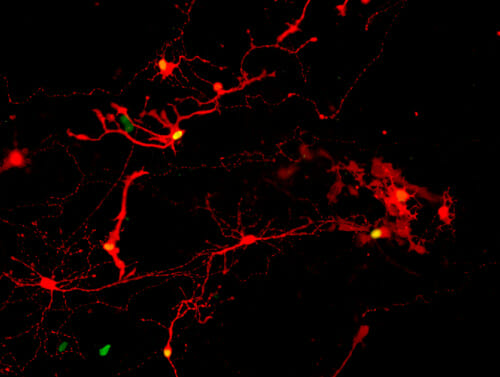
Lab-grown retinal eye cells make successful connections, open door for clinical trials to treat blindness UW–Madison image courtesy Gamm Laboratory.
More than a decade ago, ophthalmology professor David Gamm began coaxing stem cells to grow into organized clusters that resemble the human retina. Since then, he and his collaborators have continued to make progress toward their ultimate goal of treating degenerative eye disorders like glaucoma and macular degeneration. This year, the researchers made significant progress toward human clinical trials when they showed their lab-grown retinal cells could complete the kind of “handshake” needed to communicate with one another and potentially replace diseased cells with healthy ones.
Cold science in Cranberry Country
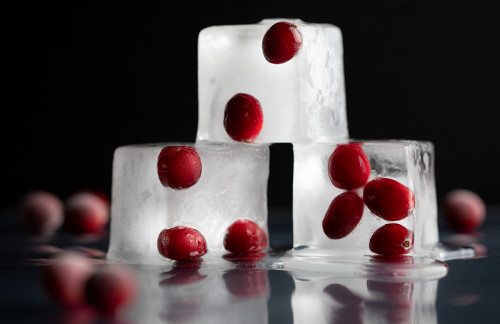
Cold hard science in the heart of cranberry country
What if we told you this story includes a tiny cancer center MRI, a special fruit that thrives in the cold, and a new tool for working with cranberry growers in Wisconsin to help protect their crops in the face of less predictable Midwestern winters? Researchers in the College of Agricultural and Life Sciences and growers in the state — Wisconsin produces more than half of the country’s cranberry crop — have teamed up to research the cranberry’s cold hardiness and ensure sustainability and success for the industry.
If less is more, how are you keeping score?
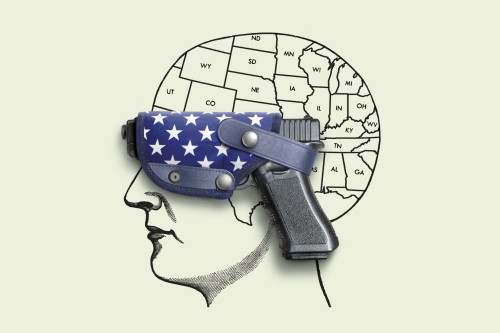
Under the gun: Nick Buttrick studies one of America’s most unusual psychologies
The presence of a gun in American homes increases the risk of many bad outcomes, yet across the U.S., people buy guns to feel safer. (There are enough civilian-owned guns in the U.S. that everyone could have one firearm with several thousand left to spare.) At the same time, once Americans buy guns, they tend to see the world as even more dangerous. Psychology Professor Nick Buttrick finds these phenomena fascinating and is working to untangle them from historical and cultural influences. He wants to know, how did we fall into a self-reinforcing loop of fear and violence?
Coffee, please, but hold the poop
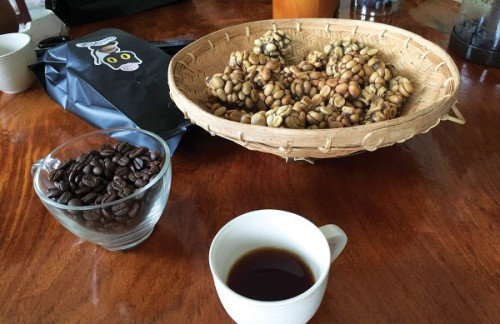
One civet coffee, please — hold the poop
Listen, this wouldn’t be a round-up of our most notable stories of the year without at least one story involving feces. But this year, it’s a story about a small, cat-like mammal called a civet and the $100 a cup coffee produced from beans that pass through their guts. Really. If you want to know more about that history, involving Dutch plantations and strict rules they placed on Southeast Asian workers in the 1700s, this story has it. It also describes how researchers in the College of Agricultural and Life Sciences are working to remove civets and their poop from the process of creating this precious cuppa.
Climate secrets at Cave of the Mounds
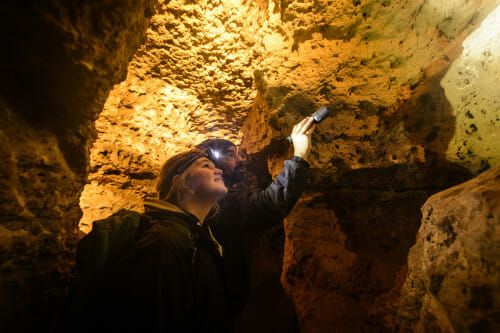
Wisconsin cave holds tantalizing clues to ancient climate changes, future shifts Photo: Bryce Richter
Climate change can feel like such a huge issue that it’s impossible to wrap your head around. And so many of the places scientists find records of past climate conditions — in Antarctic ice or among tiny fossilized sea creatures in rock at the bottom of the ocean — seem so far away. So, it’s surprising and sobering to learn that the same sort of clues to our past and possible future can be found in Southern Wisconsin, less than 30 miles from the UW–Madison campus, in the walls of a cave thousands of visitors pass through every year.
Baking pies for the universe
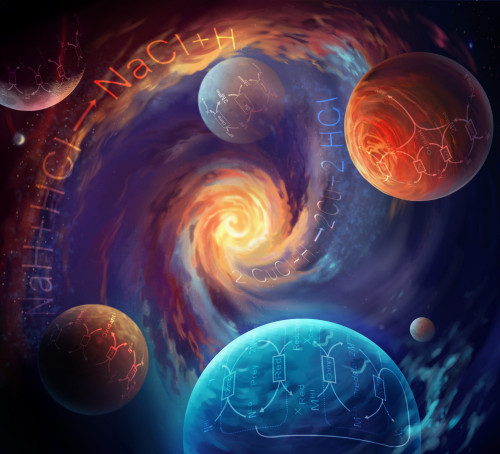
New recipes for origin of life may point way to distant, inhabited planets
“The origin of life really is a something-from-nothing process,” says Betül Kaçar, a NASA-supported astrobiologist and UW–Madison professor of bacteriology, who is, with her research, on the hunt for the chemical reactions responsible for the origins of life on Earth, or really any place else in the universe. There are, after all, only so many ingredients in the universe’s pantry and only so many ways to mix them. UW–Madison scientists are helping write the cookbook of recipes with the potential to give rise to life.
Decolonizing paleontology
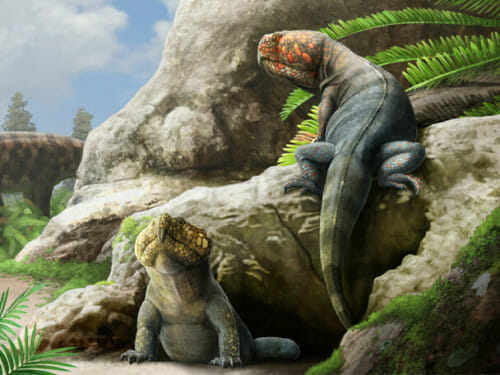
Newly described ancient reptile named in language of First Nations where fossils were found Gabriel Ugueto
Beesiiwo cooowuse was a squat, herbivorous relative of modern crocodiles and birds that had a beak-like mouth and roamed the globe between 250 and 227 million years ago. It’s also the first Western-science species to be named in the language of the Arapaho people, upon whose ancestral lands the fossil specimens originated. Beesiiwo was named by tribal elders in a collaboration between the Northern Arapaho Tribal Historic Preservation Office and UW–Madison scientists, including students, representing a growing number of partnerships seeking to decolonize scientific practices.
Bonus: The truth in our genes
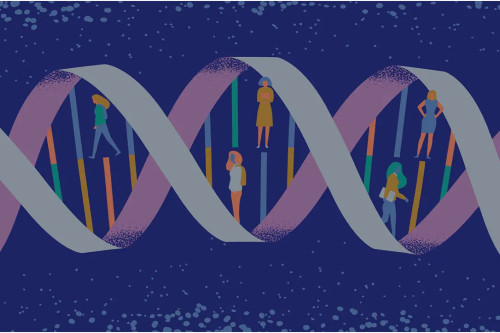
The truth in our genes
Still with us? This spring, On Wisconsin magazine tackled the myriad possibilities offered by easy-to-access genetic tests, as well as the potential perils of generating such a flood of genomic data, like genetic discrimination. UW–Madison has become a leading hub for the field of social genomics, exploring some of these complicated questions.


